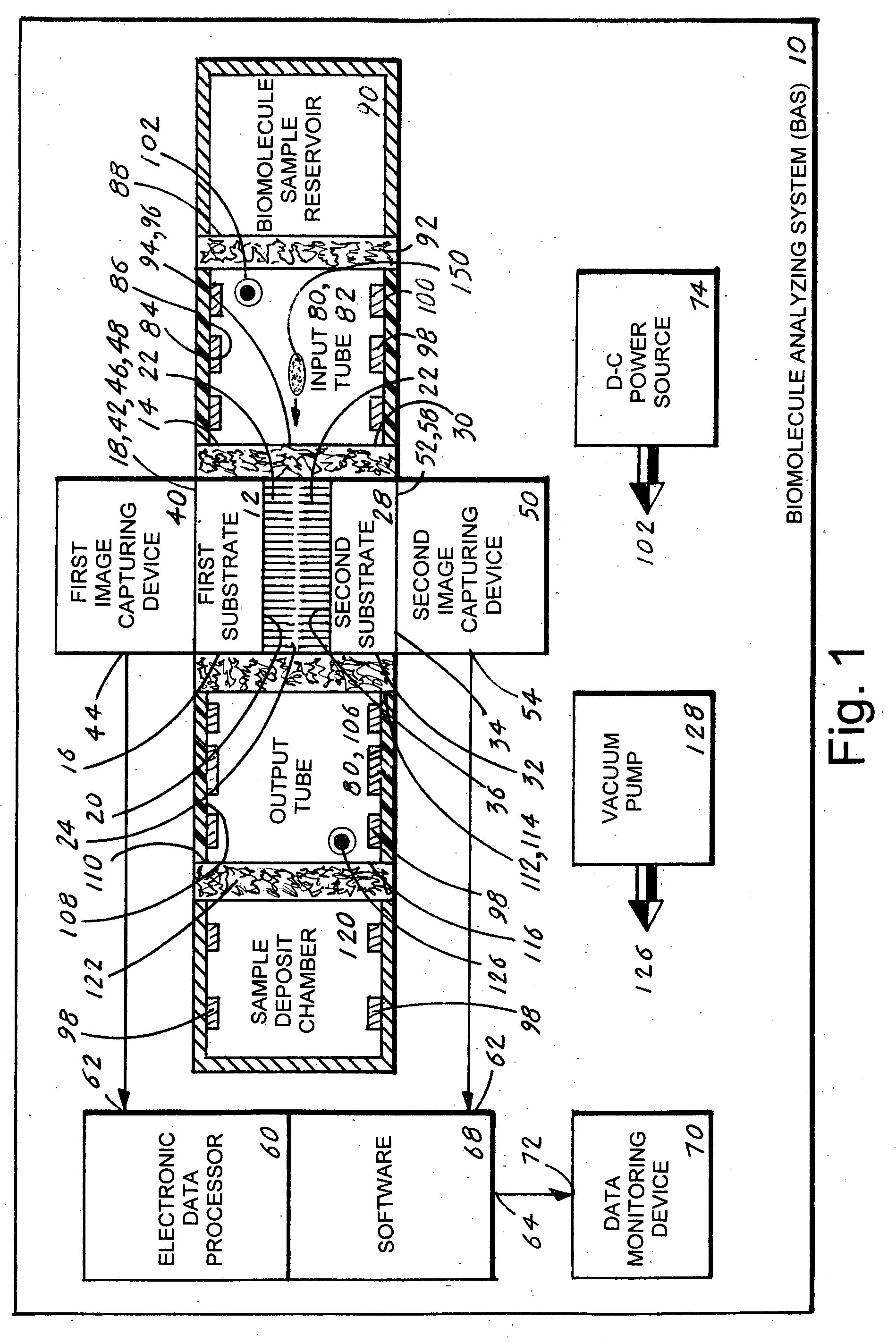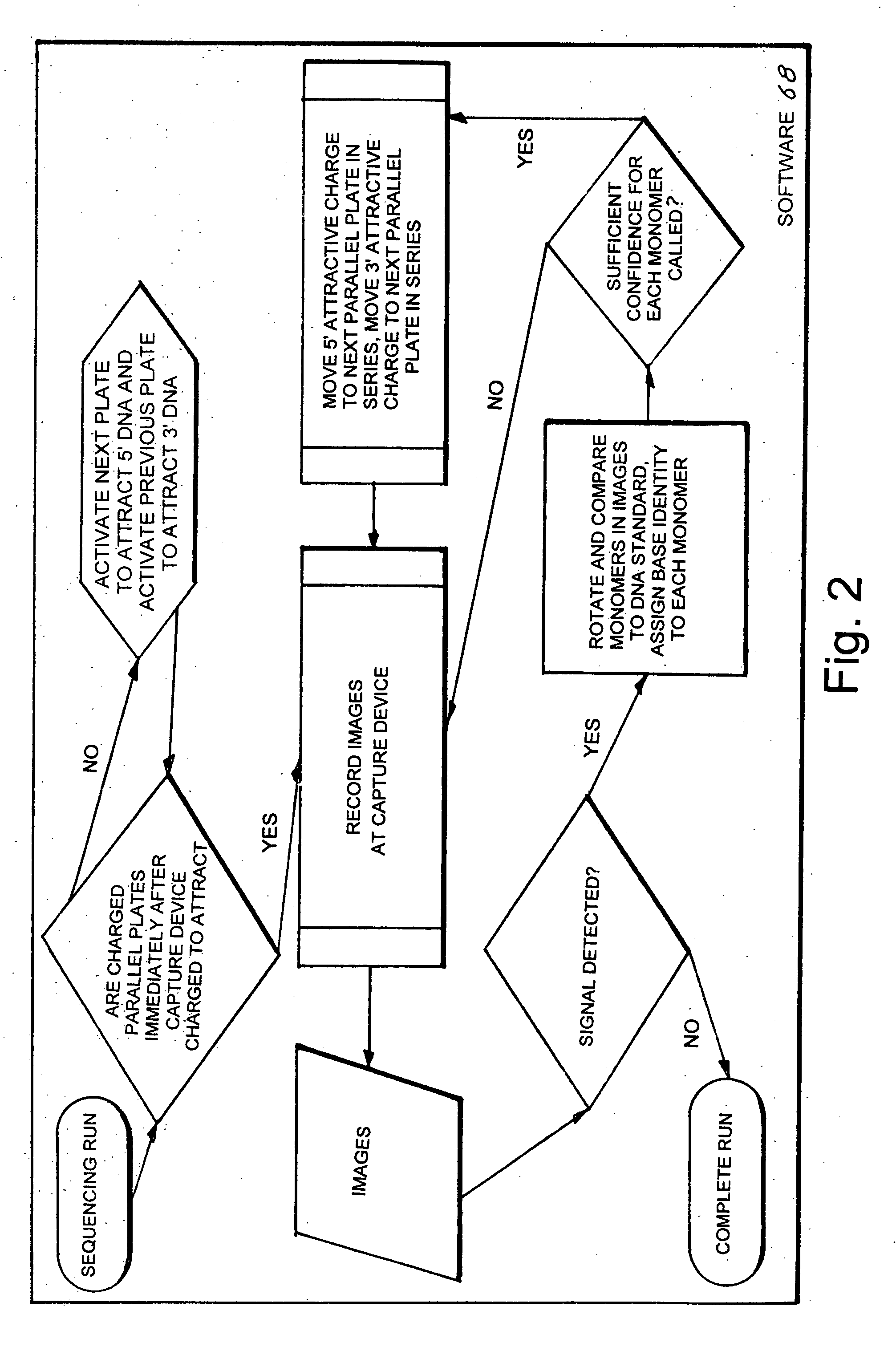Biomolecule analyzing system
a biomolecule and analysis system technology, applied in the field of biomolecule analysis systems, can solve the problems of insufficient sequencing of long dna strands, difficult and error-prone task of overlapping fragments into a complete genome, and the length of linear track is the limit of the dna fragment that can be moved, so as to increase or decrease the frequency of observations
- Summary
- Abstract
- Description
- Claims
- Application Information
AI Technical Summary
Benefits of technology
Problems solved by technology
Method used
Image
Examples
Embodiment Construction
[0047]The best mode for carrying out the invention is presented in terms of a preferred embodiment for a biomolecule analyzing system 10 (hereinafter “BAS 10”). The BAS 10, as shown in FIGS. 1-4, is comprised of the following major elements: a first substrate 12, a second substrate 28, a first image capturing device 40, a second image capturing device 50, an electronic data processor 60, software 68, a data monitoring device 70, a d-c power source 74 and a biomolecule traversing track 80.
[0048]The first substrate, as shown in FIG. 1, includes an inner edge 14, an outer edge 16, an outer surface 18, and an inner surface 20. From the inner surface 20 extends downward a multiplicity of cilia 22, with each cilium 22 having a uniform length and terminus 24.
[0049]The second substrate 28, as shown in FIG. 1, includes an inner edge 30, an outer edge 32, an outer surface 34 and an inner surface 36. From the inner surface 36 extends upward a multiplicity of cilia 22, with each cilium 22 also ...
PUM
| Property | Measurement | Unit |
|---|---|---|
| length | aaaaa | aaaaa |
| diameter | aaaaa | aaaaa |
| height | aaaaa | aaaaa |
Abstract
Description
Claims
Application Information
 Login to View More
Login to View More - R&D
- Intellectual Property
- Life Sciences
- Materials
- Tech Scout
- Unparalleled Data Quality
- Higher Quality Content
- 60% Fewer Hallucinations
Browse by: Latest US Patents, China's latest patents, Technical Efficacy Thesaurus, Application Domain, Technology Topic, Popular Technical Reports.
© 2025 PatSnap. All rights reserved.Legal|Privacy policy|Modern Slavery Act Transparency Statement|Sitemap|About US| Contact US: help@patsnap.com



